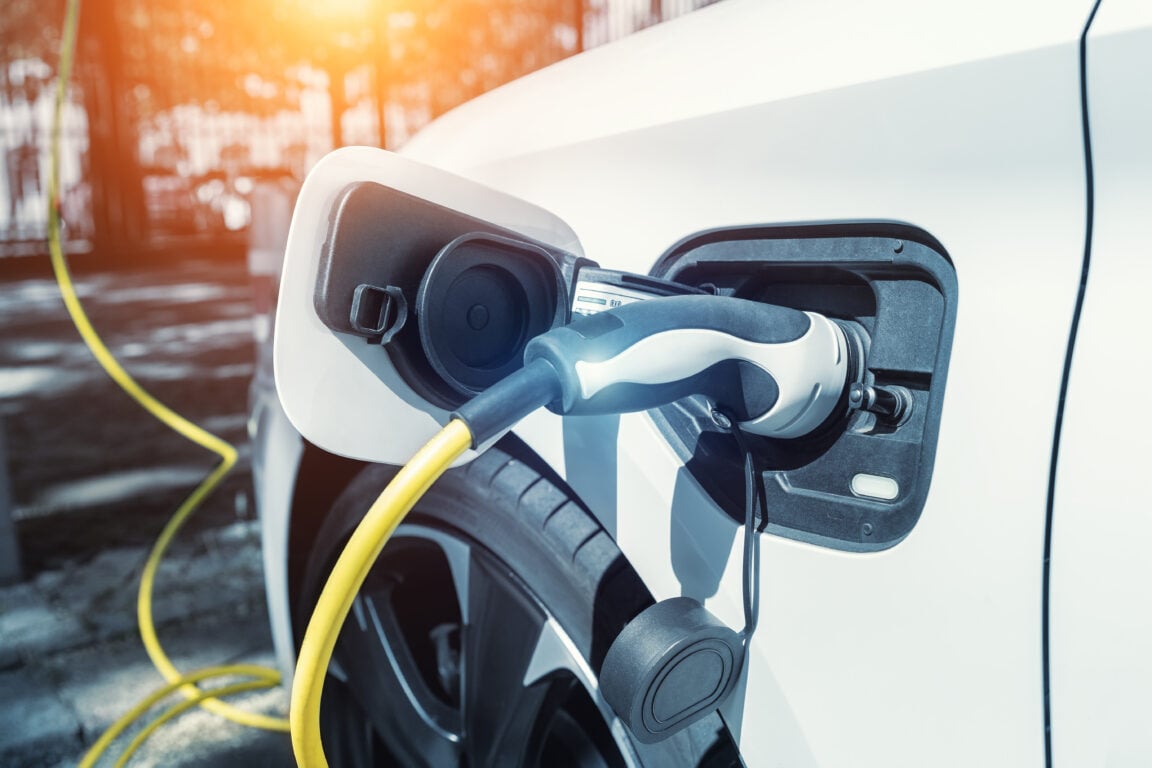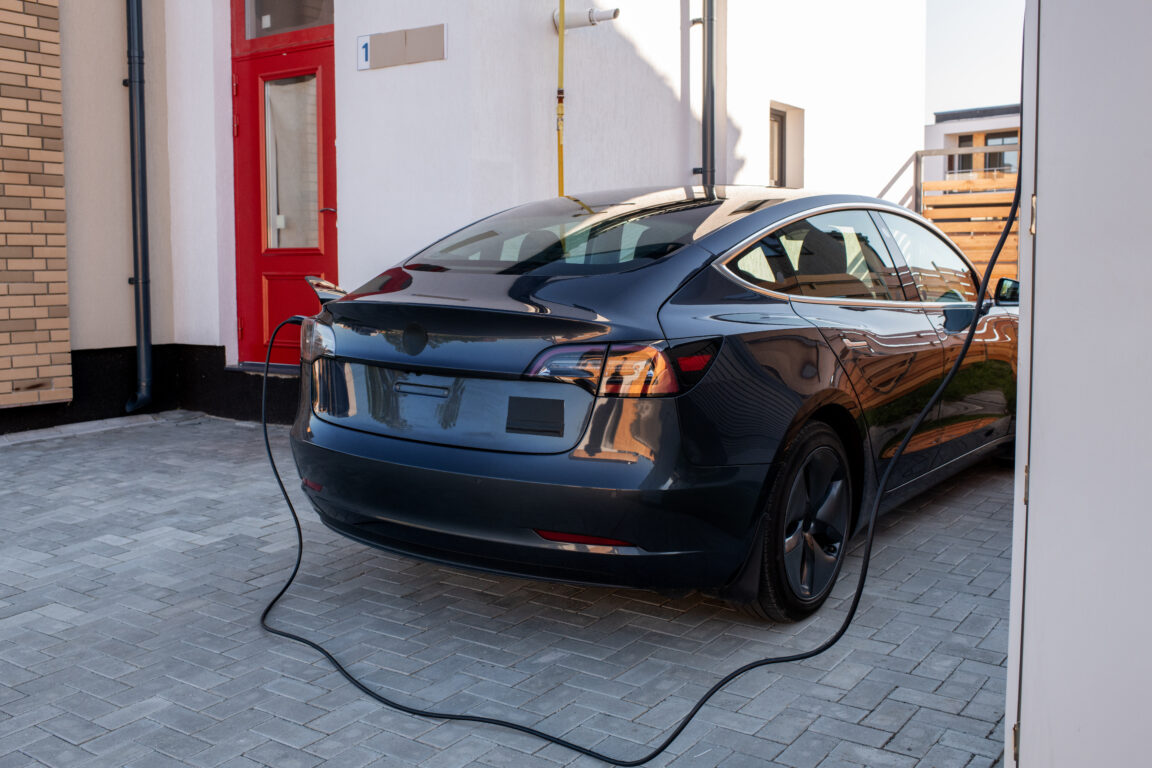Powering up your Electric Ride: A Guide to EV Charger Types and Must-Knows Before Installation!


As the cost of gasoline continues to rise and the effects of PM2.5 pollution become more apparent, electric vehicles (EVs) are becoming an increasingly popular choice for environmentally conscious consumers. However, with the rise of EVs comes the need for reliable and efficient charging infrastructure. Installing an EV charger at home is the most convenient and cost-effective option for most EV owners. But before you make the switch, it's essential to understand the different types of EV chargers available and what you should know before installation. In this guide, we'll explore the types of EV chargers and the key factors to consider before investing in one. So, let's power up your electric ride!

Types of Cars that require charging
Plug-In Hybrid (PHEV)

These vehicles operate like regular hybrids but with a larger battery that provides more electric driving range. Typically, a PHEV battery is around 6-14 kilowatts, which can take you around 25-50 km on a single charge when in electric-only mode. Although a PHEV still uses gasoline, you can drive it for shorter distances using electric power only, which saves fuel and reduces emissions.
Electric Vehicle (EV)

Unlike PHEVs, EVs rely completely on electricity, so they don't need gasoline at all. EVs also come with much larger batteries, allowing for a much longer electric driving range. With a battery capacity of 40-90 kilowatts, you can drive an EV for 300-600 km on a single charge. This means that you can travel much further without having to worry about running out of power. And with zero emissions, EVs are an excellent choice for those who want to do their part in reducing pollution and greenhouse gas emissions.
Things to know about an EV charger installation at home

If you're planning to buy an EV, there are a few things to consider before making the switch. One of the most important things to keep in mind is your home's electrical system. A proper installation is critical to ensuring your safety and avoiding potential electrical problems. Before you make the investment, it's essential to assess your home's electrical capacity to ensure that it can handle the added demand from the EV charger.
Inspect your house's electrical meter size
When it comes to installing an EV charger at home, one crucial factor to consider is your electrical meter. Most residential electrical meters are rated 1P 15(45), which means that they can measure up to 15 amps and handle up to 45 amps of electricity consumption. However, EV chargers require a higher amount of electricity, which means that you'll need to upgrade your electrical meter to 30(100) to handle the added demand.
Switch to an MCB (Miniature Circuit Breaker)
The Main Wire connects the electric meter to the Main Switchboard or Main Distribution Board (MDB). For installing an EV charger system, the Main Cable size must be upgraded from 16mm² to 25mm², and the MCB capacity should be changed from 45A to 100A. In summary, the size of the electric meter, main cable, and MCB should be compatible.
Make room for a Circuit Breaker in an MDB
When charging an EV, it should be isolated from other electrical equipment and have its own separate miniature circuit breaker. If the existing electrical control panel does not have any available slots, an additional sub-panel needs to be installed.
RCD
For charging an EV car, an EV Socket Type 3 with 3 pins and an earth connection is required. It must be able to withstand a continuous electrical current of not less than 16 (A).
*The socket shape may vary depending on the plug format of each car model*
Types of EV Chargers
Alternating Current (AC)

An alternating current (AC) charger charges an electric vehicle using an Onboard Charger in the car, which converts it to direct current (DC) first in order to charge the battery. AC charging takes longer, typically 4-7 hours for 0-80% charge, and is recommended for overnight charging.
Types of AC Chargers
- Type 1 : 1 phase 32 A / 250 V
- Type 2 : 1 phase 70 A / 250 V , 3 phase 63 A / 480 V
Pros and Cons of an AC Charger
- Benefits: This charger is affordable, suitable for both PHEV and EV, installable at home, and has a maximum charging capacity of 22 kilowatts, depending on the electrical systems. It won't overheat the battery, enabling instant plug-in after parking.
- Drawbacks: Time-consuming charging, which would require planning beforehand. Furthermore, this method of charging is not compatible for condo tenants/residents or those who lack a personal house.
Direct Current (DC)

As the name suggests, unlike an AC (alternating current) Charger, a DC charger is a direct current charger, lacking an onboard charger for conversion. Due to being a direct current charger, charging is subsequently faster as the battery is directly charged. Chargers are usually found in public areas, taking only 40 minutes to an hour for a 0-80% charge.
**Only compatible with EV cars
Types of EV Chargers:
- CHAdeMo : 200 A / 600 V
- CCS COMBO : 200 A / 600 V , 200 A / 1000 V
Pros and Cons of a DC Charger
- Benefits: Faster charging, which comes in handy especially for long-distance travels. Furthermore, chargers are readily available in most public areas, such as in gas stations, and the amount charged would be sufficient for extensive, continuous travels.
- Drawbacks: Costly charging (and installation) compared to an AC charger, coming in at 6.5-7.7 THB. Despite chargers being mostly readily available, drivers are advised to plan ahead of time due to chargers not quite being readily available everywhere yet. Operation sometimes might be convoluted, due to some DC chargers requiring smartphone application pairings and varying methods of payment.
Search for local EV Chargers here:
How to calculate charging and transportation fees

Now that we know which types of cars require charging and what to consider before installing a home charging system, let's discuss how the cost of charging an electric vehicle is calculated and estimate the approximate expense of using an EV for transportation.
Calculation Example
An EV car's maximum charging capacity is 7 kilowatts/battery capacity is 60 kilowatts/farthest travel distance is 400km per one full charge, meaning the car could maintain 7 kilowatts of electrical energy in a one-hour charge. Therefore, 8.5-9 hours is required for 60 kilowatts of energy.
Let's say the electrical fees is 5 baht/one unit
- 1-hour charge: 7 x 5 x 1 = 35 baht
- 2-hour charge: 7 x 5 x 2 = 70 baht
- 8.5-hour charge: 7 x 5 x 8.5 = 297.5 baht
Ultimately, a full EV charge would cost around 297.5 baht. Let's now see how much would it cost for an EV to travel for 400km:
297.5 baht ÷ 400 km = 0.74 baht
0.74 baht/km, when compared to 4-5 baht of a benzene engine, proves to not only be cheaper but also cost-saving in the way of travel.
Before you decide to purchase an EV car, however, make sure to study details regarding the vehicle thoroughly as well as the battery and electricity fees and other relevant factors.
Conclusion
In conclusion, electric vehicles are becoming more popular as the world shifts towards a more sustainable future. Installing the right EV charger is an important decision that can affect the performance and longevity of your electric ride. It is essential to understand the different types of chargers, their charging speed, and compatibility with your vehicle before making a final decision. Factors like your driving habits, the distance you travel, and the availability of charging stations in your area should also be considered. By taking these factors into account and choosing the right EV charger, you can ensure that your electric ride is always ready for the road ahead.
Search for your ideal property, available for both rent and sale, from our selection of 250,000 places in Thailand here:



